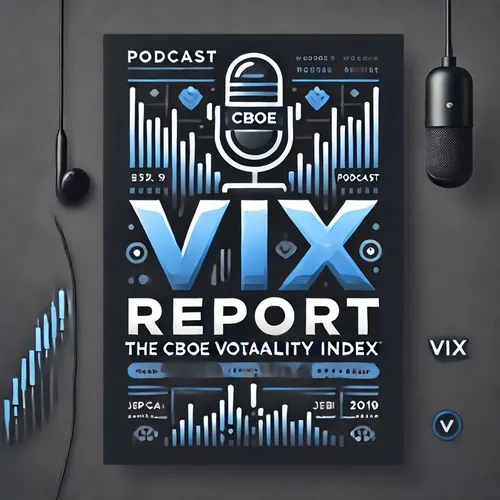"Volatility Ticks Up Slightly: A Deeper Look at the VIX Gauge"
- Author
- QP-1
- Published
- Sat 16 Aug 2025
- Episode Link
- https://www.spreaker.com/episode/volatility-ticks-up-slightly-a-deeper-look-at-the-vix-gauge--67387559
The Cboe Volatility Index, or VIX, is currently at 14.83 as of August 16, 2025. This value represents a 2.35 percent increase from the previous market day, when the VIX closed at 14.49, according to data reported by YCharts and the St. Louis Fed.
The VIX, often called the "fear gauge," measures expected volatility in the S&P 500 over the next 30 days by aggregating weighted prices of S&P 500 Index options. A rise in the VIX usually signals growing uncertainty about equity market direction, as investors pay more for options to hedge portfolios or speculate on volatility.
Several underlying factors have driven this recent uptick in the VIX. First, the percent change likely reflects short-term shifts in risk sentiment, possibly linked to macroeconomic data releases, shifting expectations for Federal Reserve policy, or geopolitical events. Even minor negative trends or surprises in economic indicators can quickly translate into higher demand for downside protection, pushing the VIX higher.
This current VIX level of 14.83, while up on the day, remains relatively low by historical standards, suggesting that markets are pricing in modest future volatility despite the recent single-day jump. Typically, a VIX below 20 is associated with calmer, less volatile markets, whereas spikes above that range often coincide with sharper downturns or market stress.
Looking at the trends, the VIX has hovered in the mid- to upper-teens for much of the past month, briefly rising above 16 earlier in the week before settling slightly lower. This pattern indicates a market in consolidation, with sporadic but short-lived increases in volatility likely driven by news cycles or technical factors within the equity markets. The mean-reverting nature of the VIX—that is, its tendency to drift back toward a long-term average—is a key dynamic, as volatility spikes are typically followed by periods of moderation.
The daily percent changes should be understood within this broader context of ongoing portfolio hedging, shifting risk premia, and the structural tendency of volatility measures to respond sharply to both real and anticipated developments. Market participants continue to use VIX-related products to hedge against adverse moves or to position around anticipated events, keeping the index responsive to even subtle changes in sentiment.
Thanks for tuning in. Come back next week for more insights into market volatility and trends. This has been a Quiet Please production. For more from me, check out Quiet Please Dot A I.
For more http://www.quietplease.ai
Get the best deals https://amzn.to/3ODvOta
